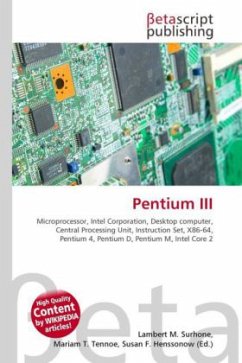Please note that the content of this book primarily consists of articles available from Wikipedia or other free sources online. The Pentium 4 brand refers to Intel''s line of single-core mainstream and high-end desktop and laptop central processing units (CPUs) introduced on November 20, 2000 (August 8, 2008 was the date of last shipments of Pentium 4s). They had the 7th-generation microarchitecture, called NetBurst, which was the company''s first all-new design since 1995, when the Intel P6 microarchitecture of the Pentium Pro CPUs had been introduced. NetBurst differed from the preceding Intel P6 (Pentium III, II, etc.) by featuring a very deep instruction pipeline to achieve very high clock speeds (up to 3.8 GHz) limited only by TDPs reaching up to 115 W in 3.4 GHz 3.8 GHz Prescott and Prescotts 2M cores (a high TDP requires additional cooling that can be noisy or expensive). In 2004, the initial 32-bit x86 instruction set of the Pentium 4 microprocessors was extended by the 64-bit x86-64 set.
Bitte wählen Sie Ihr Anliegen aus.
Rechnungen
Retourenschein anfordern
Bestellstatus
Storno








